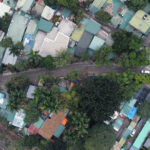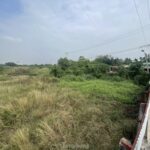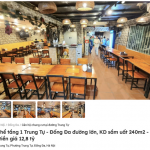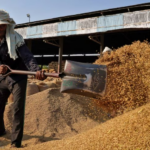While there is a significant demand for affordable and social housing, Hanoi is faced with the issue of numerous unoccupied resettlement apartment projects, left to be overtaken by weeds and mold. Tall buildings have been erected on prime land for over a decade, only to lie idle and unused.
Notable examples include the project on Duy Tan Street in Cau Giay District, the Sai Dong New Urban Area project, and the one on Ly Son Street in Long Bien District. Another project with a “million-dollar view” overlooking Ho Den Lu lake has also suffered a similar fate.
VietNamNet has reached out to the Hanoi Department of Construction to seek answers to this unfortunate situation.
Awaiting Acceptance Due to Updated Fire Safety Regulations
Mr. Mac Dinh Minh, Deputy Director of the Hanoi Department of Construction, shared that among the nine current projects, two resettlement housing projects in the NO15,16 ward of Thuong Thanh district (Long Bien district) and in the Tran Phu ward (Hoang Mai district) have been completed and inspected but remain unoccupied.
The remaining seven projects are under construction, including the resettlement housing project in the CT4 area of the Phu Dien concentrated resettlement area (Bac Tu Liem district), the resettlement housing project at N01 C17 in the new Cau Giay urban area, and the project in the B10/ODK3 area of Yen So ward (Hoang Mai district), among others.
“The entire housing fund from these projects has been allocated by the city for resettlement purposes, especially for key projects,” the department leader said.
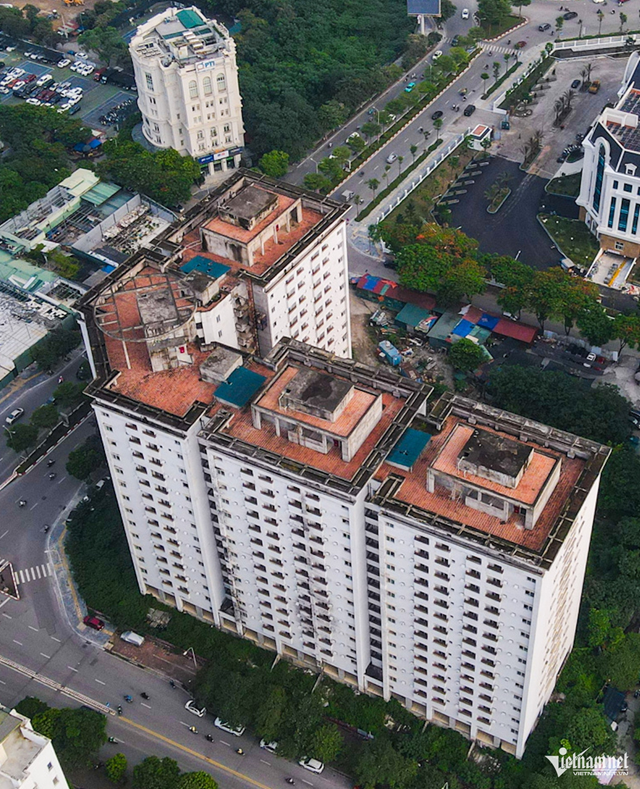
Hanoi’s golden land lies idle. Source: Vietstock
|
Regarding the reasons for the non-acceptance of the resettlement projects, the representative from the Department of Construction cited “numerous difficulties and obstacles.”
One issue is that while the apartments have been allocated to projects requiring site clearance, the progress of these projects has been delayed or is in the preparation phase. As a result, the investors of the site clearance projects have not submitted applications for the city to issue decisions on the sale of the houses.
Additionally, the projects were designed and constructed according to previous standards and regulations, which have since been updated, particularly regarding fire safety. Consequently, they do not meet the current requirements for acceptance.
Furthermore, some projects were designated as COVID-19 treatment facilities and were handed over to the Hanoi Capital Command. They have not yet been returned to the investors for the completion of the remaining items and final acceptance, as per regulations.
On this matter, the Department of Construction shared that the Hanoi People’s Committee has assigned the Department of Health to coordinate with the Hanoi Capital Command and related units to promptly complete the process of receiving and returning the COVID-19 treatment facilities at the resettlement housing projects.
Proposal to Auction the Properties
Given the situation of thousands of vacant resettlement apartments, there have been suggestions to convert them into social housing.
The Department of Construction explained that the 2023 Housing Law stipulates cases where the function of a property can be changed, including converting resettlement housing into social housing.
Additionally, Decree 95 of 2024 specifies that the conversion of resettlement housing into social housing is only permitted when there is no longer a need for resettlement housing in the area, and the size of the converted housing meets the standards for social housing as per the law on social housing development and management.
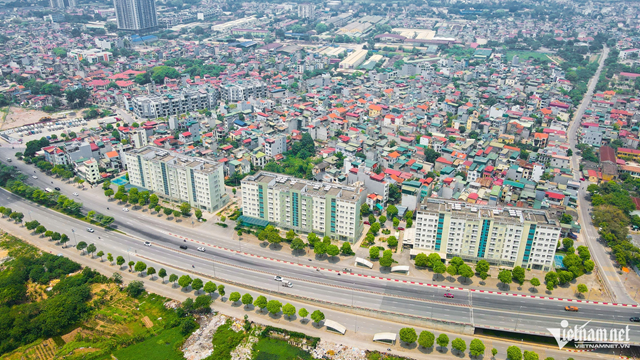 Proposal to auction the unused resettlement apartments. Source: Vietstock
|
However, according to the Hanoi Department of Construction, the entire housing fund from the resettlement projects has already been allocated by the city for resettlement purposes, particularly for key projects.
“In the future, the Department will coordinate with relevant departments, branches, and People’s Committees of districts and towns where there are resettlement projects,” the department representative said. “We will review and assess the demand for resettlement housing and provide advice and reports to the City People’s Committee in accordance with current regulations.”
Regarding solutions to expedite the operation and efficient utilization of the resettlement housing projects, the Department of Construction has made several proposals to the Hanoi People’s Committee.
For the resettlement housing fund, if there are still unoccupied apartments after resettlement arrangements for affected households, it is proposed to organize auctions to recover the capital.
“For the two completed and accepted projects, the city has assigned the Hanoi Housing Management Center, under the management of the Department of Construction, to sell the resettlement houses in accordance with regulations,” the department shared.
Additionally, it is suggested that the People’s Committees of the districts where the projects are located and the Hanoi Civil Construction Project Management Board urgently coordinate with relevant departments, branches, and units to implement procedures such as project adjustments, capital allocation, and reception after using the COVID-19 treatment facilities, to complete construction and put them into use by the fourth quarter of 2024.
Furthermore, there should be enhanced communication and encouragement for people to accept financial support to arrange for their own resettlement in site clearance projects. Owners and users of old apartment buildings can also opt for financial assistance to find temporary accommodation during the implementation of renovation and reconstruction projects, instead of relying on the city for temporary housing arrangements.
Hong Khanh
Hanoi’s Update on the Delayed 1.000 billion VND Hospital Project
To address the challenges faced by investors, the Hanoi People’s Committee has instructed the Long Bien People’s Committee and the Department of Natural Resources and Environment to resolve any obstacles that arise during the implementation of the Thang Long 1,000-Year Oncology and Plastic Surgery Hospital project.


























